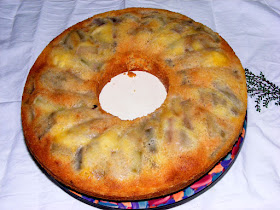When we get the chance we always try to cook a big batch of something tasty, interesting, and almost as importantly, quick to turn into a meal after taking out of the freezer. This is a recipe I prepare three or four times a year, with chicken wings and drumsticks. Lately I have been adding turkey wings to the mix, because you can occasionally buy them in bulk at the supermarket.
Whatever meat you use, it needs to have a bone in it, because it's a meal best eaten with your fingers. If using turkey, cut the wings lengthways.
Ingredients
1 kg poultry wings (2.2 pounds), drumettes & wingettes
In a bowl;
1 cup milk (250ml)
¼ tsp salt
¼ tsp ground black pepper
Marinating and basting sauce (mix these together in a large ziplock bag)
1½ Tbsp gochugaru (or 1tsp chili flakes)
3 Tbsp gochujang
2 Tbsp brown sugar
2 Tbsp honey
2½ Tbsp soy sauce
1 Tbsp oyster sauce
1 Tbsp ketchup
1 Tbsp Worcestershire sauce
1½ Tbsp rice wine
3 cloves minced garlic
1 bird's eye chili minced
Instructions
Put the meat into the bowl of milk.
Cover the bowl with cling film and leave in the fridge for about 20 minutes.
Drain and let it sit in a sieve for about 5 minutes.
Once drained, put the wings into the bag containing the marinade. Seal the bag
and vigorously shake and massage so that the sauce covers the meat. Marinate
it for at least 4 hrs in the fridge (24 hours is better) and massage
occasionally.
Preheat the oven to 220 degree Celsius.
Take the chicken out of the fridge. Lay baking paper on top of the baking
tray and line up the pieces. Make sure they are not stacked up on top of each
other.
Put the bag of excess marinade to one side for later.
Put the tray into the oven and bake for 15 minutes. Take the tray out,
turn the meat over and put it back in the oven. Bake for 10 more minutes.
Transfer the meat for immediate consumption to an air fryer (or preheated
oven). Brush with some of the excess marinade using a basting brush.
Cook at full blast for 2 minutes or until the skin is charred. Turn the meat over and brush again, and give it another 2 minutes.
Garnish with toasted sesame seeds and serve.
If, like us, there's only two of you and you're trying not to eat too much, 1kg of
meat is too much for one sitting. I usually cook a double batch, and freeze
the majority for later use.
Divide the remaining cooked (but not air fried) and cooled meat into servings, and put in
freezer bags with divided up excess marinade. Keep in the freezer.
When you're using the frozen meat, you have two choices:
For salad composée: defrost, then baste with the marinade, and heat in the
airfryer at 160°C for 15 minutes basting continually. Turn over after 5
minutes.
To have hot: defrost, then reheat at 160°C for 10 minutes in an airfrier. Then
turn up the heat to maximum, baste liberally with the marinade from the bag,
and give them 2 or 3 minutes a side, basting with the remaining marinade when
you turn them.




























































